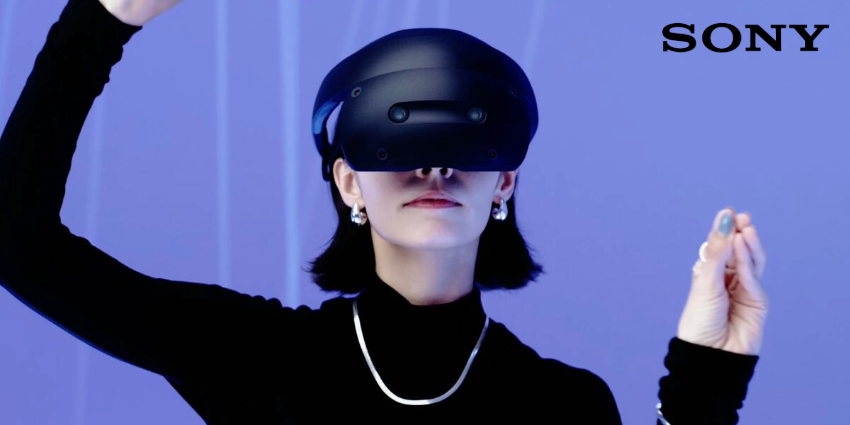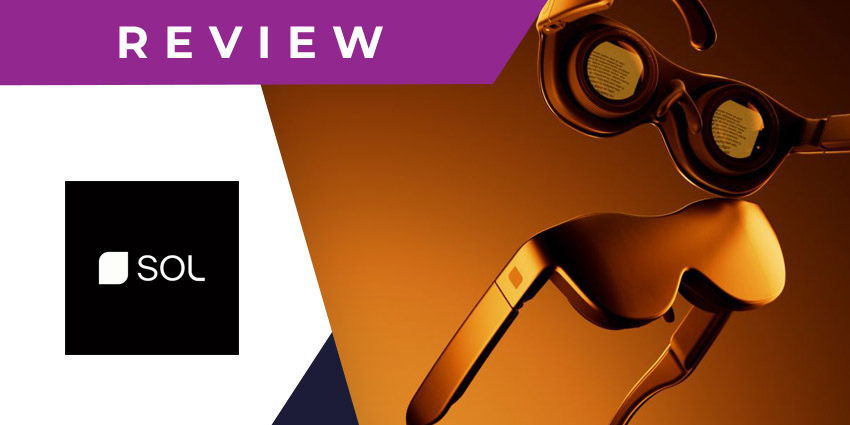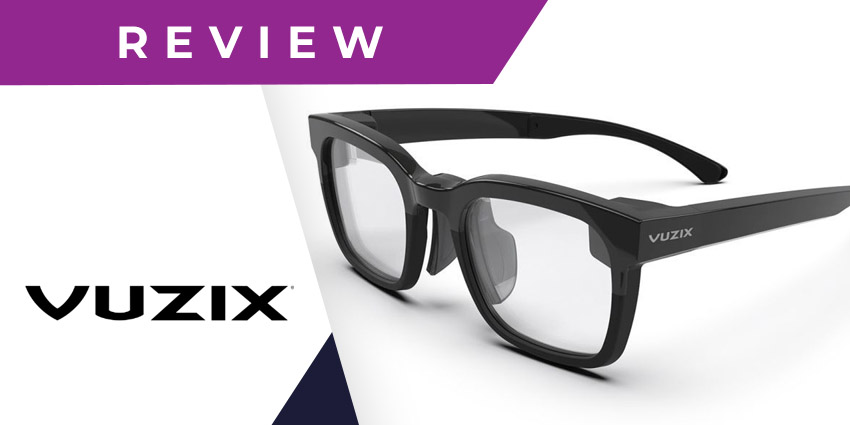In this Pimax Crystal review, we’re taking a closer look at a headset promising “ultra VR” experiences. Introduced at CES 2023, the Pimax Crystal builds on Pimax’s growing collection of high-resolution headsets.
Similar to previous Pimax devices, this headset features an exceptionally high pixel count, external tracking cameras, and robust glass lenses. However, the high price tag could mean this new VR contender struggles to compete with solutions like the new Meta Quest 3.
We took a closer look at the Pimax Crystal to determine how appealing it might be to enterprises and companies investing in virtual reality.
What is the Pimax Crystal? Introduction and Specs
The Pimax Crystal is an “ultra-clear” VR headset created by the Pimax team, which is already well known for its 5K and 12K headset options. According to Pimax, it’s one of the most impressive VR headsets on the market, suitable for gaming, enterprise use, and even pilot training.
Here’s a quick run-down of the specs:
- 35 PPD glass aspheric lenses
- 2880 x 2880 pixels per eye
- Local dimming with true-to-light colors
- 72/90/120 hz adjustable refresh rate
- 120 or 140-degree diagonal field of view
- Snapdragon XR2 processor and Pimax customized PCVR engine
- PCVR and AIO modes
- Eye tracking with automated IPD and DFR
- Original off-ear speakers and 3.5mm audio jack
- Three microphones
- 600mAh battery
- Wi-Fi 6E and optional 60Ghz add-on
- 58-72mm IPD adjustment
- Inside-out tracking and support for SteamVR
- 4 x head/hand/controller tracking cameras and 2 x eye tracking cameras
Prices for the Pimax crystal start at $1,599, or you can pay monthly for $73.79 per month. There’s also free shipping to the US, UK, EU, AU, and Japan. This means you’ll pay about the same as you would for the HTC VIVE Pro 2.
Pimax Crystal Review: Design and Build
Let’s start our Pimax Crystal review with a quick look at the headset design. If you’re familiar with products like the Pimax 5K headset, the Crystal looks pretty similar. It’s mostly black plastic and features an angular, modern design.
Compared to other headsets like the Apple Vision Pro, it’s a little heavier, weighing around 960 grams. That means you’ll probably not be able to wear this headset for long periods without compromising on comfort.
Fortunately, the headset is adjustable to give you the perfect fit, and there’s a large foam insert you can use if you need extra space for eyeglasses. You also get a handy IPD slider and can adjust interpupillary distance manually or automatically (with eye tracking).
The Pimax Crystal has two sizable battery packs, which you can charge with a USB-C cable. Plus, a handy sliding mechanism makes it easy to swap between batteries if you run out of power quickly.
For audio, the Pimax Crystal features a set of high-fidelity DMAS off-ear headphones, great for delivering spatial audio. Plus, you can connect your headphones too. Moreover, you don’t have to invest in an additional base station since tracking cameras are built into the headset. This could be ideal if you’re limited on space in your office.
The Pimax Crystal Controllers
One thing we were slightly disappointed by during our Pimax Crystal review was the controllers. Though there’s nothing particularly wrong with them, they feel a little outdated compared to some of the most recent controllers added to the VR market.
The Crystal controllers are almost precisely the same as those you’d get with the Meta Quest 2 or Quest Pro, with an external tracking ring and simple buttons. They’re lightweight and comfortable. They’re rechargeable, so you don’t have to worry about batteries.
The biggest downside is they feel a little clunky compared to the sleek controllers of the Meta Quest 3. However, if you liked the experience you got with Quest 2, you should be happy here.
Screen quality and display
Since launching into the VR headset market, Pimax has constantly differentiated itself from the competition with a unique approach to visual fidelity. The Pimax Crystal builds on the company’s impressive reputation with the highest pixel density of any “consumer VR headset.”
Notably, this doesn’t mean it has the best pixels of any enterprise-grade headset. However, you still get a fantastic resolution of 2880 x 2880 pixels per eye, 200 nit brightness, local dimming, and exceptionally 100% NTSC colors.
You can also choose between different refresh rates, from 72hz to 160hz, in testing mode. You get a phenomenal image with the Crystal, featuring vibrant colors and excellent contrast. Compared to the Quest 2, the upgrade is remarkable.
We were also pretty impressed by the automatic IPD adjustment features. When you put the headset on, it uses eye-tracking tools to ensure you get the best possible visual experience. You can manually adjust IPD if you don’t think the automatic results are perfect.
The new glass lenses are also fantastic for minimizing glare and other issues in previous headsets.
Performance and Ease of Use
When we dove into our Pimax Crystal review, we were thrilled to find it easy to get up and running with the device. It takes minutes to set up the headset, connect to the Pimax Play app for software, and start adjusting your experience.
The Pimax Play app is also straightforward to use. It gives you all the tools to alter room settings (like floor collaboration) and even remotely start the device.
Unlike many VR headsets, the Crystal also has an impressive all-in-one mode, which you can activate with the flip of a switch. This means you can use the device separately from a PC, or you can connect it to your existing device via a 5m included cable.
The standalone mode features a unique suite of apps on the Pimax storefront and a reasonable battery life. Though the headset itself only has a 120mAh battery inside, that’s there to keep it running for a few minutes when you swap between the two 6000mAh batteries. This means you don’t have to worry about shutting your device down if you’re out of power.
Plus, you get a charging dock for the batteries included, so you can always ensure you have access to a backup if you’re working on lengthy VR projects.
Notably, the standalone mode is more for entertainment than enterprise use. If you want to tap into the headset’s full functionality for immersive training or collaboration purposes, using this headset as a PC VR system is probably best.
In PC mode, the Pimax Crystal can access Steam VR, providing instant access to various helpful business tools. The experience is even better now that Steam has updated its interface with more valuable features for business and enterprise users.
Pimax Crystal: The Verdict
Ultimately, our hands-on Pimax Crystal review revealed this headset delivers in several key areas. It’s an incredibly powerful VR headset for business users and consumers who want to go beyond the basics of tools like the Quest 2.
The Pimax Crystal features some of the best visual and audio fidelity on the market, with an extremely high resolution and phenomenal DMAS off-ear speakers. However, it’s among today’s more expensive “consumer” VR headsets.
We’d likely recommend this solution for companies looking to invest in the benefits of immersive learning in virtual reality or companies building products in VR. It might be a bit too expensive for those who just want to play with VR apps or collaborate occasionally in a virtual world.
Pros:
- Incredible visual fidelity with excellent resolution per eye.
- Fantastic headphones for in-depth audio.
- Comfortable, easy-to-use controllers.
- Easy to use app.
- Hot-swappable batteries.
- Great tracking capabilities.
- Automatic and manual IPD tuning.
Cons:
- A little heavier than a standard VR headset.
- Slightly basic standalone mode.
- Expensive pricing








